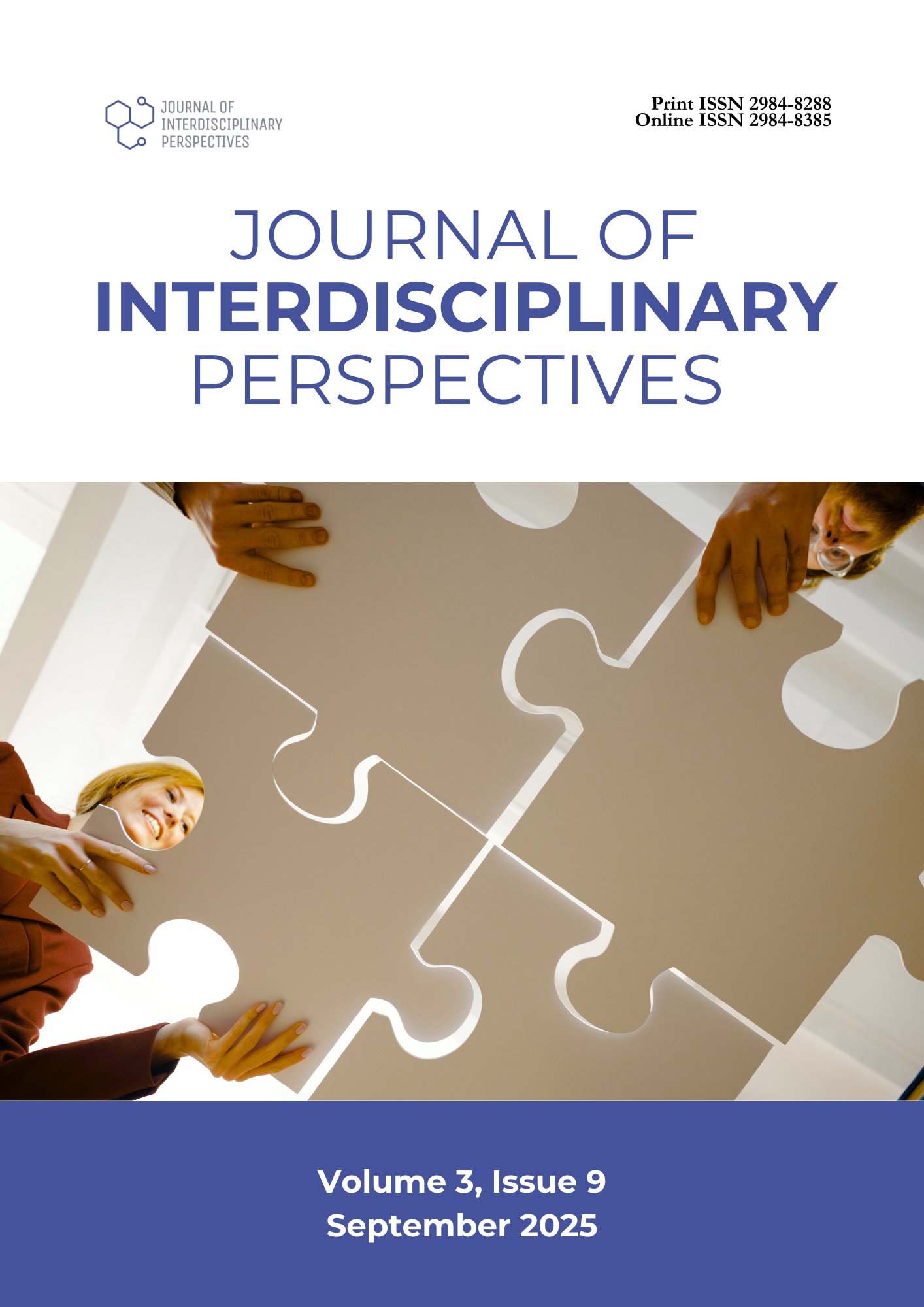Development and Validation of a Filipino Contextualized Sexual Self-Esteem Scale (FC-SSES)
DOI:
https://doi.org/10.69569/jip.2025.545Keywords:
Cultural psychology, Exploratory mixed methods, Sexual health, Sexual self-esteem, Sexual well-beingAbstract
Sexual self-esteem is a vital aspect of an individual’s perception of their sexual identity and capacity to engage in meaningful and satisfying sexual experiences. It shapes sexual decisions and behaviors across emotional, physical, and relational dimensions. Despite its importance, research on sexual self-esteem remains limited, particularly in culturally traditional societies like the Philippines, where societal norms and values often constrain discussions about sexuality. To address this gap, the present study aimed to develop a culturally contextualized instrument to measure sexual self-esteem within the Philippine setting. Employing an exploratory sequential mixed methods design, the study began with a qualitative exploration to capture the multifaceted construct of sexual self-esteem within the Filipino context. Thematic analysis of interview data revealed six emergent themes that guided the development of the Filipino Contextualized Sexual Self-Esteem Scale (FC-SSES). The scale underwent rigorous testing, including a pilot study with 300 participants and a field test with 1,000 participants from a state university in the Philippines. Exploratory factor analysis (EFA) identified six underlying factors: Sexual Agency, Sexual Self-Awareness, Sexual Self-Acceptance, Sexual Assertiveness, Sexual Education, and Sexual Empowerment. The FC-SSES demonstrated high internal consistency (α = 0.91, ω = 0.91) and strong convergent evidence of construct validity, establishing its reliability and suitability for measuring sexual self-esteem in the Philippine setting. The FC-SSES holds significant implications for improving sexual health and well-being. It offers a culturally relevant tool to identify individuals at risk for sexually related distress, dissatisfaction, and negative self-perceptions. Moreover, it serves as a foundation for developing interventions aimed at promoting sexual health, education, and overall well-being among Filipinos.
Downloads
References
American Psychological Association. (2018). APA Dictionary of psychology. Dictionary.apa.org. https://dictionary.apa.org/sexuality?_gl=1
Arnett, J. J. (2008). The neglected 95%: Why American psychology needs to become less American. American Psychologist, 63(7), 602–614. https://doi.org/10.1037/0003-066x.63.7.602
Boateng, G. O., Neilands, T. B., Frongillo, E. A., Melgar-Quiñonez, H. R., & Young, S. L. (2018). Best practices for developing and validating scales for health, social, and behavioral research: A primer. Frontiers in Public Health, 6(149). https://doi.org/10.3389/fpubh.2018.00149
Bries, F. S. M., Chiong, A. I. E., Calleja, E. A. J., & Quisto, A. P. (2018). “Ang gusto ko lamang sa buhay ay…” paunang pagbuo at pagsusuri ng isang imbentaryo ng mga motibasyon ng mga Filipino. Tomo, 6, 19–51. https://tinyurl.com/nhcykn2v
Buss, D. M. (2018). The evolution of love in humans. The New Psychology of Love, 42–63. https://doi.org/10.1017/9781108658225.004
Comrey, A. L., & Lee, H. B. (2013). A first course in factor analysis. Psychology Press. https://doi.org/10.4324/9781315827506
Creswell, J. W., & Creswell, J. D. (2018). Research design: Qualitative, quantitative, and mixed methods approaches (5th ed., pp. 302–312, 341–351). Sage Publications, Inc.
Dong, Y., & Dumas, D. (2020). Are personality measures valid for different populations? A systematic review of measurement invariance across cultures, gender, and age. Personality and Individual Differences, 160(1). https://doi.org/10.1016/j.paid.2020.109956
Heidari, M., Ghodusi, M., & Rafiei, H. (2017). Sexual self-concept and its relationship to depression, stress, and anxiety in postmenopausal women. Journal of Menopausal Medicine, 23(1), 42. https://doi.org/10.6118/jmm.2017.23.1.42
Hensel, D. J., Fortenberry, J. D., O’Sullivan, L. F., & Orr, D. P. (2011). The developmental association of sexual self-concept with sexual behavior among adolescent women. Journal of Adolescence, 34(4), 675–684. https://doi.org/10.1016/j.adolescence.2010.09.005
Hensel, D. J., Fortenberry, J. D., O’Sullivan, L. F., & Orr, D. P. (2011). The developmental association of sexual self-concept with sexual behavior among adolescent women. Journal of Adolescence, 34(4), 675–684. https://doi.org/10.1016/j.adolescence.2010.09.005
Jahanfar, S., & Pashaei, Z. (2022). Sexual attitudes and associated factors of risky sexual behaviors among university students. Brain and Behavior, 12(8). https://doi.org/10.1002/brb3.2698
Kaiser, H. F. (1974). An index of factorial simplicity. Psychometrika, 39(1), 31–36. https://doi.org/10.1007/bf02291575
Li, X., Zhang, H., Zhao, S., & Tang, K. (2023). Predicting risky sexual behavior among college students through machine learning approaches: Cross-sectional analysis of individual data from 1264 universities in 31 provinces in China. JMIR Public Health and Surveillance, 9(1). https://doi.org/10.2196/41162
Mitchell, K. R., Lewis, R., O’Sullivan, L. F., & Fortenberry, J. D. (2021). What is sexual wellbeing and why does it matter for public health? The Lancet Public Health, 6(8). https://doi.org/10.1016/s2468-2667(21)00099-2
Nkhoma, D. E., Lin, C.-P., Katengeza, H. L., Soko, C. J., Estinfort, W., Wang, Y.-C., Juan, S.-H., Jian, W.-S., & Iqbal, U. (2020). Girls’ empowerment and adolescent pregnancy: A systematic review. International Journal of Environmental Research and Public Health, 17(5), 1664. https://doi.org/10.3390/ijerph17051664
Oattes, M. K., & Offman, A. (2007). Global self-esteem and sexual self-esteem as predictors of sexual communication in intimate relationships. The Canadian Journal of Human Sexuality, 16(3), 89–100.
Ortega, J. M., Pamatian, A. N., Reyes, G. M., & Velasco, T. (2024). Extremely hot! Please handle with care: Exploring the sext life of Filipino young adults. ResearchGate.
Osuala, E., Ogbu, B., & Udi, O. (2020). Risky sexual behaviour among students of tertiary institutions in South-South, Nigeria: A qualitative study. Health, 12(09), 1095–1104. https://doi.org/10.4236/health.2020.129080
Papalia, D. E., & Martorell, G. (2021). Experience human development (15th ed., p. 412). Mcgraw-Hill.
Pe-Pua, R., & Protacio-Marcelino, E. A. (2000). Sikolohiyang Pilipino (Filipino psychology): A legacy of Virgilio G. Enriquez. Asian Journal of Social Psychology, 3(1), 49–71. https://doi.org/10.1111/1467-839x.00054
Romero, A. S. C., & Espinoza, M. J. V. (2023). Risky sexual behaviors among university students. Salud, Ciencia Y Tecnología, 3. https://doi.org/10.56294/saludcyt2023256
Rosenberg, M. (1965). Rosenberg self-esteem scale. PsycTESTS Dataset, 1(1). https://doi.org/10.1037/t01038-000
Shaheen, S., & Batool, F. (2019). Perceived physical attractiveness and sexual esteem among male and female adults. Pakistan Journal of Psychological Research, 34(3), 565–581. https://doi.org/10.33824/pjpr.2019.34.3.31
Snell, W. E., & Papini, D. R. (1989). The sexuality scale: An instrument to measure sexual‐esteem, sexual‐depression, and sexual‐preoccupation. Journal of Sex Research, 26(2), 256–263. https://doi.org/10.1080/00224498909551510
Træen, B., Štulhofer, A., Janssen, E., Carvalheira, A. A., Hald, G. M., Lange, T., & Graham, C. (2018). Sexual activity and sexual satisfaction among older adults in four European countries. Archives of Sexual Behavior, 48(3), 815–829. https://doi.org/10.1007/s10508-018-1256-x
Downloads
Published
How to Cite
Issue
Section
License
Copyright (c) 2025 Journal of Interdisciplinary Perspectives

This work is licensed under a Creative Commons Attribution-NonCommercial 4.0 International License.








